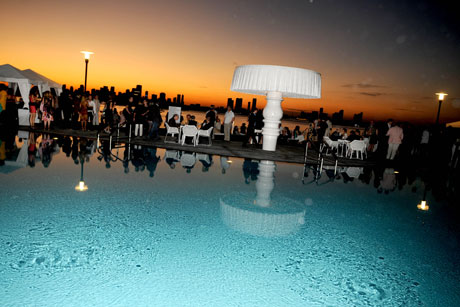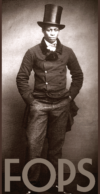
Art Basel 2009’s opening party at the Mondrian. Photo via PatrickMcMullan.com.
Whenever the leaders of the art world stage a major event, vastly rich people are never far from the scene. It’s no secret that both successful artists and the dealers who sell their work draw heavily on the fortunes of committed patrons. In this privately subsidized industry, money legitimizes creativity and upholds the traditionally high value of celebrated fine art.
Starting on Thursday in Miami Beach, the internationally famous Basel art fair will draw many of society’s wealthiest collectors to southern Florida for a firsthand look at the latest offerings from high-profile galleries. At parties and special V.I.P. presentations, big spenders will mingle with distinguished artists and clever salesmen, as well as critics and members of the museum establishment.
Surveying the objects and people on display at Basel certainly won’t occupy every moment of the elite crowd’s time, though. Visitors to Miami for the fair can expect to witness an onslaught of luxury yachts and private jets in the area. Prominent collectors will be holding court at exclusive locations around the city by lavishly entertaining friends and just generally cultivating an atmosphere of festive opulence. For each night of the exhibition, billionaires have arranged intimate dinners for trusted members of their inner circles. No doubt, securing such invitations will be the ambition of many aspiring art impresarios.
What’s interesting is that, by the time staunch supporters of art officially become marquee fixtures in society, they typically surround themselves only with longtime friends and allies. This means that outside the realm of official fund-raising galas and formal public celebrations, A-list gatherings usually are secluded affairs. Such tête-à-têtes represent how the elder patrons of the arts will spend their time in Miami when not participating in the more highly publicized activities associated with fair.
Actual art sales to venerable collectors aren’t likely to generate any noteworthy surprises, either. For the most part, affluent connoisseurs know what they like to acquire, and they deal with familiar galleries, not with people they suddenly meet at a fair. On the occasions when items are purchased spontaneously, as sometimes happens when collectors are picking up the work of emerging artists, standard approaches to fortifying the collection are abandoned. The work of emerging artists is cheaper, commonly in the range of tens or hundreds of thousands of dollars, which for a very serious collector isn’t a consequential sum that requires deliberation.
Basel, of course, is about more than the deportment of the rich collecting set. It’s also a lively forum for new ideas and a commemoration of the vitality of the art community. Much of what happens there will be more entertaining than the activities of the rich. But it’s their money that truly drives the industry.
by Jamie Johnson “One Percent” November 30, 2010, 2:00 PM
source: Vanity Fair

